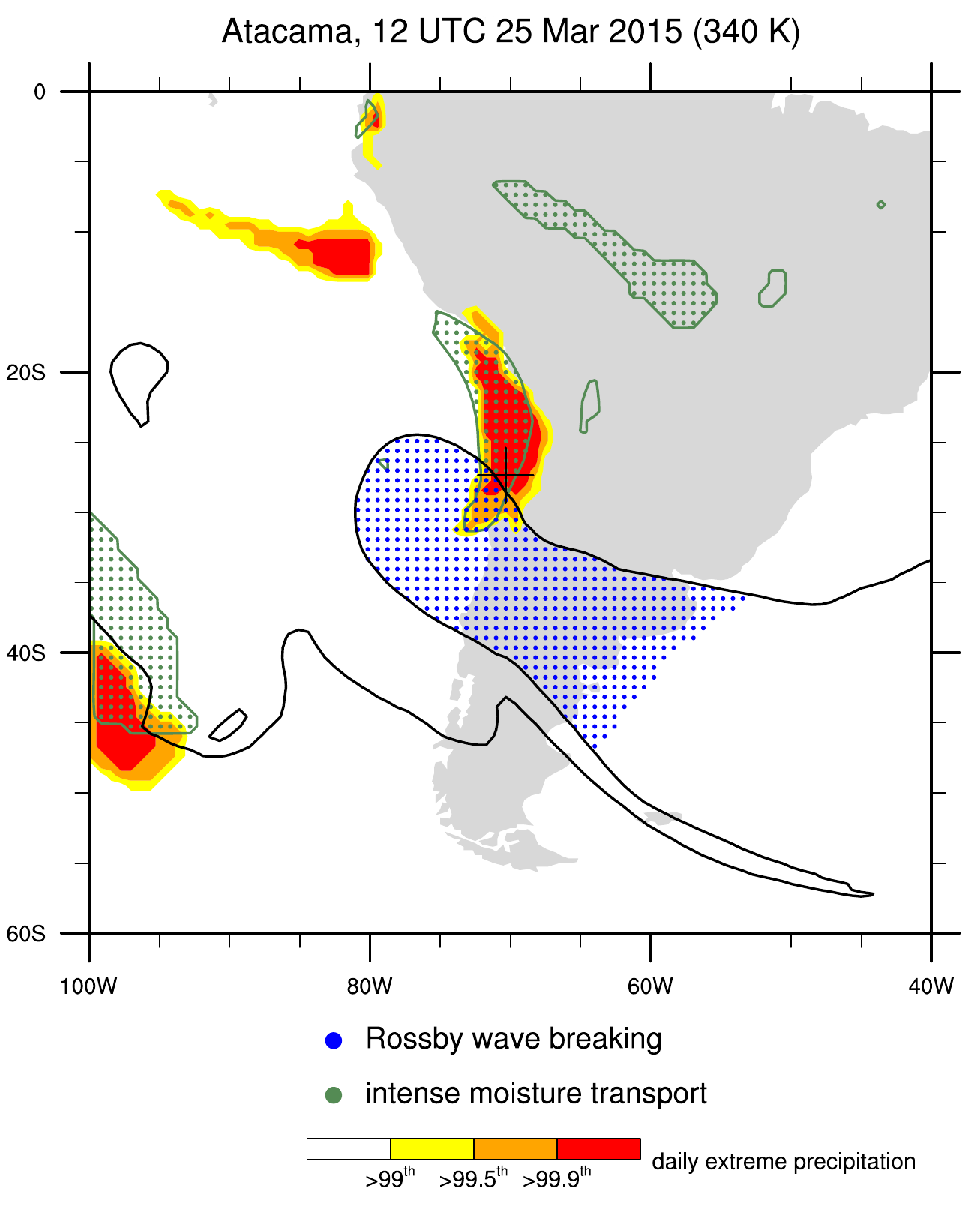A global view on Rossby wave breaking and extreme precipitation
The atmospheric dynamics group at ETH Zurich has a long history in research on Rossby wave breaking. Early studies identified this phenomenon in satellite data and model output, and linked it to extreme precipitation in the southern Alpine region. Now, for the first time, a new study by Andries de Vries presents evidence on the role of Rossby wave breaking in the formation of extreme precipitation events at the global scale.
Extreme precipitation in the dry subtropics
Rossby wave breaking is important for heavy rainfall in many subtropical and extratropical regions, and can explain up to 90% of extreme precipitation events over central North America and the Mediterranean. One of the most important findings of the study is that the combination of Rossby wave breaking and intense moisture transport is responsible for up to 70% of extreme precipitation events in regions where they are expected the least – the dry subtropics. Flooding in these regions frequently causes devastating socioeconomic impacts, as demonstrated by a selection of notorious events that resulted in thousands of deaths and immense economic damages, including the Atacama Desert floods of March 2015. Each of these events was associated with Rossby wave breaking and intense moisture transport. The findings of this study help to improve the understanding of atmospheric processes that lead to extreme precipitation events with implications for their predictability and studies on their future changes.

References
- de Vries, A. J.: A global climatological perspective on the importance of Rossby wave breaking and intense moisture transport for extreme precipitation events, Weather Clim. Dynam., 2, 129–161, external page https://doi.org/10.5194/wcd-2-129-2021, 2021.
- external page EGU press release of 9 March 2021
- Webpage of Andries de Vries